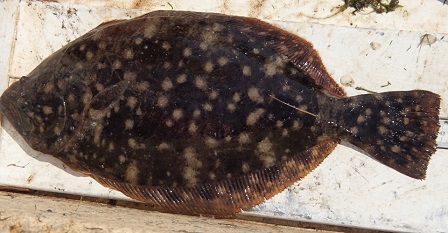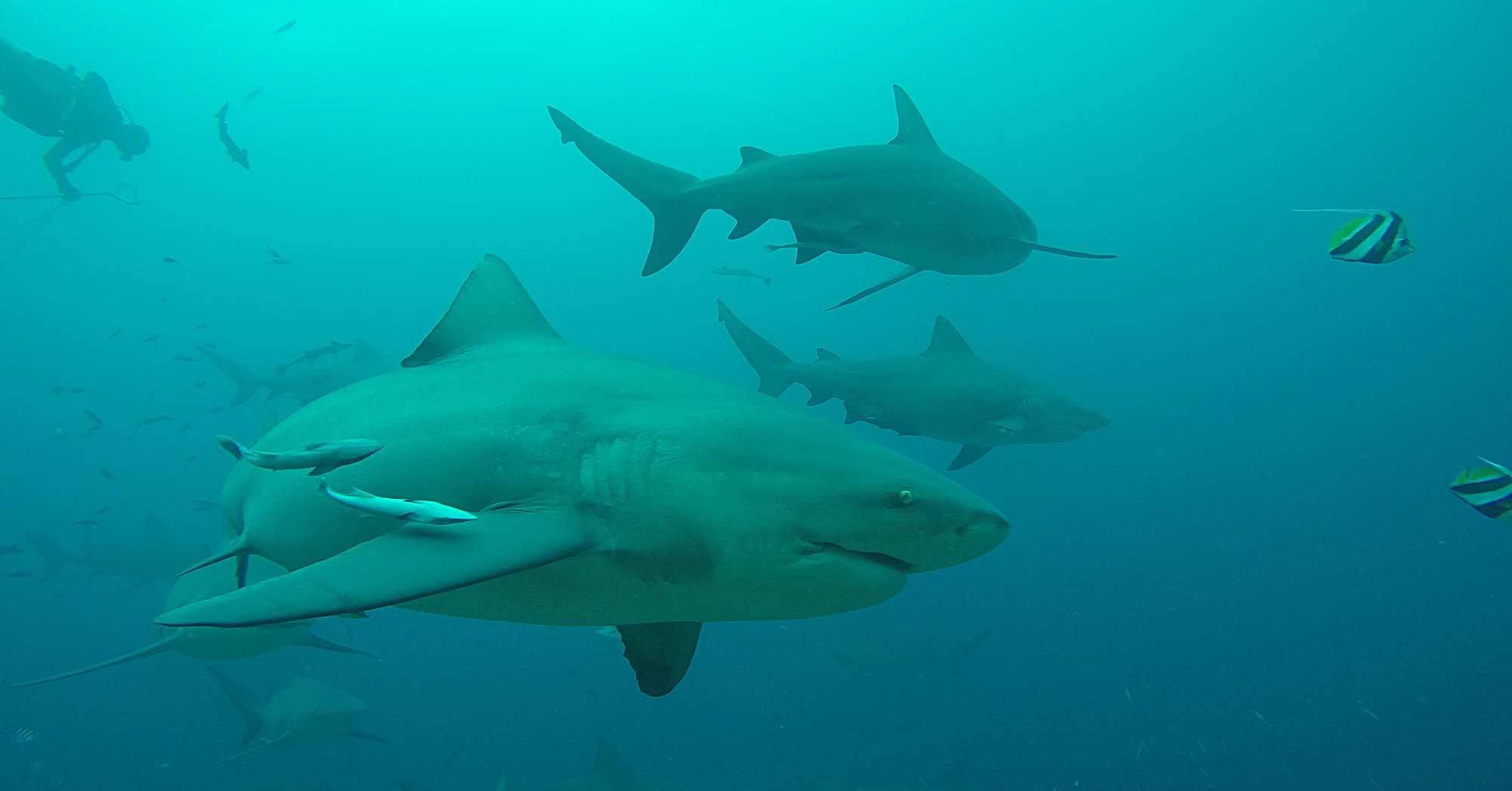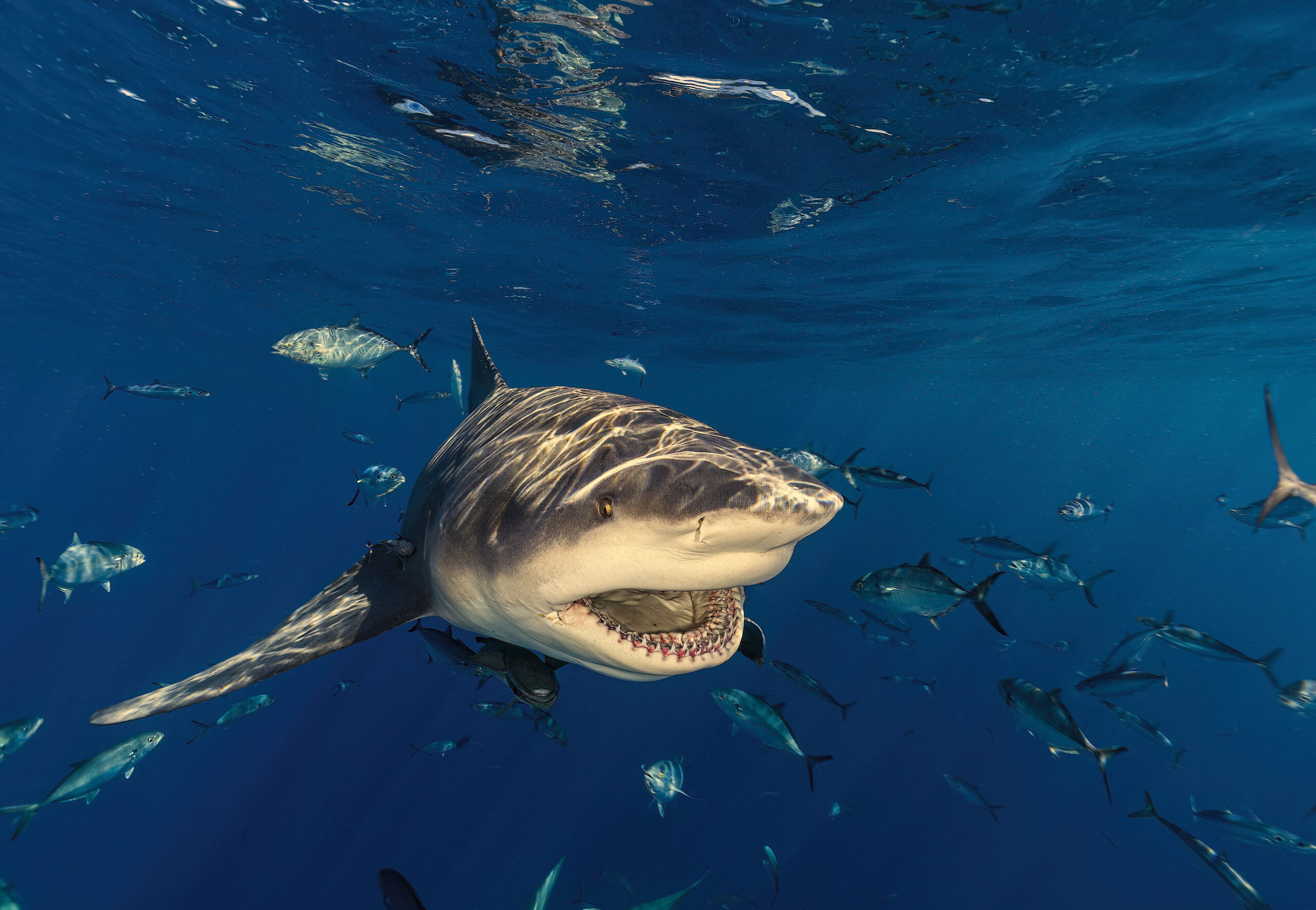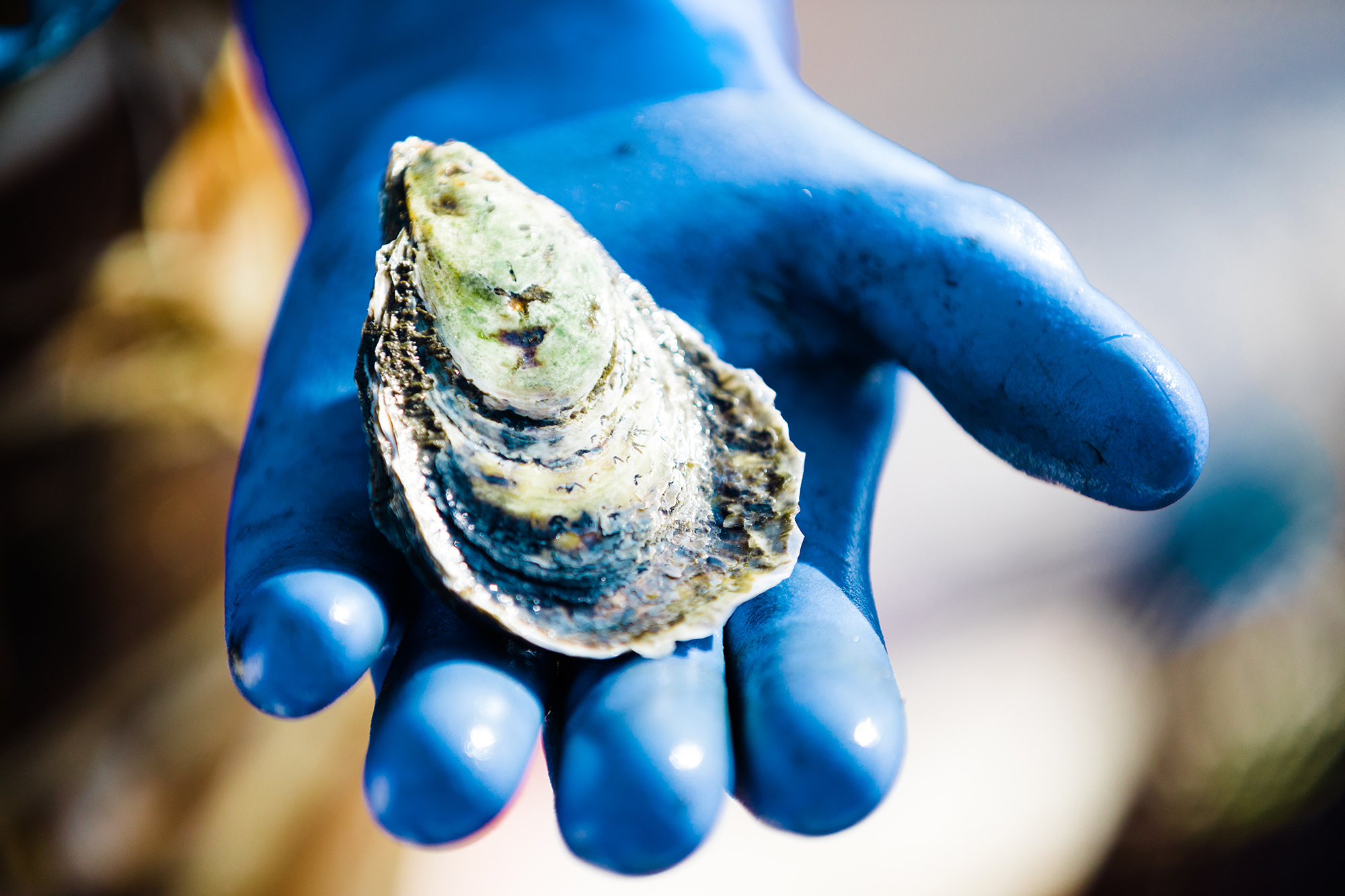THE POWER OF OBSERVATION

With the sky just beginning to lighten in the east, commercial fisherman Keith Bruno throttles back his outboard after running down the Neuse River to the Pamlico Sound. As the boat stops near the marsh’s edge, first mate Jon Coble reaches for a buoy and begins pulling in the first of 10 gill nets that he and Bruno set the previous evening.
Southern flounder, the species that Bruno and Coble seek, is the most economically important estuarine finfish in the state, according to data from the N.C. Division of Marine Fisheries, or DMF. In 2014, nearly 1.7 million pounds of the fish were landed in the commercial fishery, with a dockside value exceeding 4.8 million.
“The southern flounder fishery provides an income in the late fall, at a time of year when other fisheries are closed,” says Sara Mirabilio, fisheries extension specialist with North Carolina Sea Grant. “A lot of these guys see southern flounder as ‘Christmas money’ — money they use to make it through the holidays.”
Gill nets presently account for roughly 55 percent of the commercial southern flounder harvest. The gear is used in estuarine waters where regulations allow.
“Not only do I fish gill net myself,” says Bruno, who owns and runs Endurance Seafood in Oriental, “but I buy a lot of gill net fish from other fishermen. It’s more than half of my business here.”
Gill nets get their name from how they work. The nets catch fish by the gills as they try to swim through the nearly invisible monofilament mesh. Fish too small for the mesh will swim right through. If the fish is too big, it might tear the net and break free. If the fish is just the right size, it pushes its head and body tightly into the mesh but then is unable to swim to freedom.
The southern flounder fishery uses large-mesh gill nets that have a stretched mesh diagonal width of 5.5 inches, on average. Other gill net fisheries in North Carolina — such as those for spot and striped mullet — use small-mesh gill nets with mesh with a diagonal width between 3 and 4 inches.
Flounder nets can be up to 100 yards long and usually are anchored to float vertically just off the bottom. They are left overnight in an area fishermen hope a school of fish will pass through.
Conservation Plan
In 2009, the National Marine Fisheries Service, or NMFS, informed North Carolina that its estuarine gill net fisheries would be subject to federal closure. To avoid this, the state had to address unauthorized interactions between endangered and threatened sea turtles and the commercial gill net fishery in Core Sound and potentially other North Carolina inshore waters.
All five species of sea turtle that reside in or visit North Carolina waters — green, hawksbill, Kemp’s ridley, leatherback and loggerhead — are protected under the federal Endangered Species Act, or ESA.
A population segment of Atlantic sturgeon that occurs in North Carolina and shortnose sturgeon also are afforded protection under the ESA in North Carolina estuarine waters.
In response, DMF obtained two Incidental Take Permits for anchored gill nets in estuarine waters. Also known as ITPs, these permits allow for a limited number of “takes” of sea turtles and Atlantic sturgeon in otherwise lawful fishing activity. Due to the rarity of shortnose sturgeon in North Carolina waters, the species was not included in the Atlantic sturgeon ITP.
The ESA broadly defines a “take” as “to harass, harm, pursue, hunt, shoot, wound, kill, trap, capture, or collect, or to attempt to engage in any such conduct.” Therefore, any interaction between a protected species and a gill net constitutes an incidental take.
To maintain these ITPs and to keep the estuarine gill net fisheries open, DMF is required to provide onboard observers for a small portion of gill net fishing activity — a minimum of 1 percent of small-mesh and 7 percent of large-mesh commercial fishing trips.
DMF is tasked with managing marine and estuarine fisheries and habitat for the benefit of all North
Carolina residents. The purpose of the ITPs is to protect and conserve threatened and endangered marine species frequenting North Carolina’s inshore waters. The ITP conservation plans include managing estuarine gill net fisheries by dividing estuarine waters into six management units.
These units are based on similarity of fisheries and management; extent of known protected species interactions in commercial gill net fisheries; and unit size and the ability of observers to monitor fishing effort. This allows DMF to close selected areas rather than the entire coast if the authorized incidental take limit is approached.

“If it was a statewide estimate, and we didn’t have any management units, we’d have to close the entire North Carolina estuarine waters to all large-mesh or small-mesh, depending on what the type of interaction it was to gill nets,” says Jacob Boyd, protected resources biologist with the DMF observer program.
Interactions between gill nets and protected species vary by year and location. For example in 2014, of the 1,339 fishing trips observed in the fishery, 34 sea turtle takes were documented. In 2013, there were 31 sea turtle takes in 926 observed trips.
NMFS, also known as NOAA Fisheries, sets incidental take limits by considering DMF data, among other things. Observers cannot be on all fishing trips. Instead, DMF uses an approved statistical approach to observe a portion of trips and estimate any takes that occur on fishing trips that do not carry an observer.
Within each management unit, DMF scientists estimate the total takes for each ESA species by looking at the total number of fishing trips, the total number of fishing trips with observers, and the total number of takes witnessed by the observers.
The ITPs require 7 and 1 percent observer thresholds in large- and small-mesh gill net fisheries, respectively, so that DMF scientists have enough information to characterize the fishery.
“With better coverage, with more trips the fishermen could take us on, the more accurate our numbers could be with our estimations for turtle takes or Atlantic sturgeon takes,” Boyd says.
Reporting Numbers
On their boat, Bruno and Coble are accompanied by DMF observers. As the first of the day’s catch comes up, observer Jake Carleen boards and finds a place in the stern.
He quickly measures and weighs each fish before placing it in the live well, gathering these numbers for all of the fish caught.
The information goes into a database that DMF scientists use to determine compliance with the ITPs and other factors.
“We’re also collecting very important biological data on all species that come on the boat,” Boyd says. “It goes into all the management decisions for stock assessments and fishery management plans.”
It takes about three hours for Bruno and Coble to pull in all 10 of their gill nets. About half of the fish that come up are southern flounder. The rest are sheepshead, red drum and an assortment of other species. There are no sea turtles or sturgeon.

There is a different procedure in the rare occurrence when fishermen encounter a protected species. On those occasions, observers are required to collect data on the protected species to stay in compliance with the ITP. “You tag them, take a bunch of pictures,” Carleen says.
For the most part, an observer records data and stays out of the fishermen’s way. “I don’t mind having them aboard,” Bruno says. “He’s not in my way. I don’t burn extra fuel taking his weight.”
Although they are legally obligated to accept observers, some fishermen are reluctant to participate if they mistrust how observer data will be used.
Commercial and recreational gill net fishermen are required to report interactions with sea turtles and Atlantic sturgeon. These do not count as a take under the permit guidelines, but can help DMF improve their understanding of protected species behavior and habitat use in the sounds.
To explain the observer program and clarify its value in keeping the fishery open, Sea Grant worked with DMF to develop a short publication and two educational videos. These materials illustrate what goes on during an observed gill net fishing trip to explain the process.
“Through these products, fishermen can gain a better understanding of the process associated with fisheries observation, as well as a familiarity with how data are collected and used in fisheries management. As a result of the project, we hope observer coverage rates will be maintained at target levels, and the incidence of fishermen self-reports will increase,” explains Jack Thigpen, Sea Grant extension director.
“The video and publication produced by Sea Grant expand the outreach necessary for fishermen and the public to understand the importance of the incidental take permits and the required observer coverage under those permits,” says Chris Batsavage, DMF protected resources section chief who heads the observer program. “They provide a great deal of information in a very concise format that is easy to understand.”
Go to ncseagrant.ncsu.edu/observer_program for the observer program outreach materials.
This article was published in the Autumn 2015 issue of Coastwatch.
For contact information and reprint requests, visit ncseagrant.ncsu.edu/coastwatch/contact/.
- Categories:


